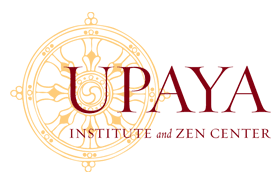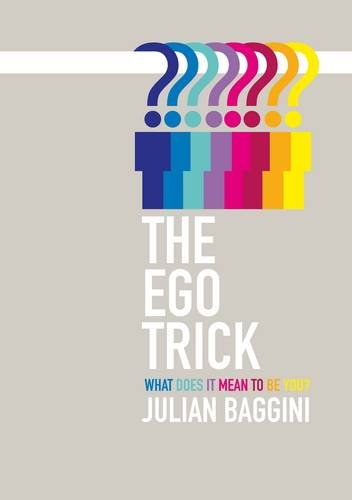This is part five of many installments in my process/review of Julian Baggini's
There is as much personal reflection in these posts as there is review of the book, and there are also philosophical reflections on the material.
during transit days on my June European adventure. At first I thought maybe I was musing more philosophical due to being tired on the plane trip over, but it has continued since I've been here, so maybe it's the continent.
I've been jotting some random thoughts as I read the book, and here is the fourth installment. Although I am back to my normal life, I plan to continue this process as much as I am able, so if this is at all interesting to you, please stay tuned.
* * * * * * *
Chapter 8 of the book examines this question of
Just an Illusion?
By this point, Baggini has adopted
bundle theory as the best explanation of the ego trick. In Western philosophy, bundle theory is most closely associated with
David Hume, and more recently with
Derek Parfit (
Reasons and Persons, 1986). This perspective holds that the self is simply a "bundle of experiences" linked by our perception of causality and the illusion of similarity - we are a collection of selves, not a single self, that are context-dependent and appear quite similar but are really not continuous over time.
It is plain, that in the course of our thinking, and in the constant
revolution of our ideas, our imagination runs easily from one idea to
any other that resembles it, and that this quality alone is to the fancy
a sufficient bond and association. It is likewise evident that as the
senses, in changing their objects, are necessitated to change them
regularly, and take them as they lie contiguous to each other, the
imagination must by long custom acquire the same method of thinking, and
run along the parts of space and time in conceiving its objects. (Hume, A Treatise of Human Nature)
In fairness to Hume, James Giles, (
No Self to be Found: The Search for Personal Identity, 1
997), among others, argues that Hume was not a reductionist (bundle theory is seen as a form of reductionism), but rather that he rejected the notion of the self in general, an approach that is very similar to the Buddhist idea of no-self (which, as we will see below, may be misunderstood in the West)
Baggini accepts the bundle theory view because it allows us to
believe that we are unique individuals who consistently exist over time, but it fervently denies that such individual beings exist. In support of his thesis, he enlists the Buddha as the first bundle theorist, rather than more common eliminative view of the self ascribed to Buddhism.
This radical idea has a history that goes back to the first bundle theory of all: that of the Buddha.
Anattā Like any other old and geographically dispersed belief system, Buddhism ceased to be a singular system of thought many centuries ago. It is therefore impossible to say what the Buddhist conception of the self is. Nevertheless, the central concept of anattā– traditionally translated as ‘no-self’ – is important to all schools, and my interest in it is not that of a cataloguer of religious dogmas, but as a seeker for ideas that might shed light on who we are. What I’m interested in is its most credible reading, not its most authentic or popular one.
In his quest to understand the concept of no-self, he spoke with Stephen Batchelor, one of my favorite Buddhists, but certainly not someone who is representative of Buddhist thought and philosophy. Batchelor, author of
Buddhism Without Beliefs and
Confessions of a Buddhist Atheist, is considered by most Buddhists to be somewhat of a heretic, largely because he dismisses ideas like karma and reincarnation as traditionally understood.
In keeping with his scholarly efforts to return Buddhist philosophy to its rational roots (as he understands them), Batchelor also believes that our current understand of
no-self should actually be
not-self.
Batchelor maintains that no-self, the hitherto standard translation of anattā, is almost certainly wrong. Many translators now prefer not-self, which may seem almost identical, but the small difference is significant. ‘Attā means “self”, or ātman in Sanskrit, and then the a- is a privative,’ Batchelor explained to me. ‘To understand what not-self is, one first has to understand what is being denied,’ to correctly identify what Tsongkhapa called ‘the object of negation’.
So what is being negated in the word attā? To understand that, argues Batchelor, you have to appreciate the context of the Buddha’s time, fourth-century BCE India, where attā or ātman was very much the central idea of the brahmanic tradition. That tradition thought of brahman as the impersonal idea of the deity, the ultimate reality, the transcendent, the unconditioned, absolute truth of things. There is a spark of that God within oneself. The true core of self is understood in terms of ātman, a unitary, partless, fundamental awareness or consciousness that is ultimately indistinguishable from the reality of brahman. Neither ātman nor brahman, however, has anything to do with the self as a distinct personality or ego.
In the Hindu tradition current at the time of the Buddha, the
ātman is a kind of impersonal self, lacking unique personality and identity, while
brahman is transcendent, the absolute reality or truth. In order to be free from the wheel of samsara (Buddhist term for the cycle of suffering and reincarnation), we must recognize that our sense of who we are - body, mind, emotions, thoughts, desires, sensations, and so on - is nothing but an illusion, a version of the ego trick. But if we can return to the reality of things, to our
ātman, we can achieve union with brahman and be reabsorbed into the divine Godhead.
Batchelor believes the Buddha rejected this model.
‘What the Buddha did was to reject that whole model altogether and declare that such an ātman effectively was a fiction, an illusion. So when he says anattā, he is rejecting the idea that there is an ātman, that there is a brahman, and focusing attention therefore on the phenomenal world. The Buddha’s teaching is really about how we come to terms with the world of appearances. For him there is nothing behind the veil of appearances, there is simply an open field of impermanent and contingent and very often tragic suffering and painful events.’
The self that is denied in anattā is therefore only one very particular conception of self. That is quite different from denying any idea of self at all, which Batchelor claims the Buddha clearly does not do. ‘In fact he uses the word attā in his discourses in a completely common-sense way. He talks of the attā as simply what we consider ourselves to be.’
According to Batchelor, the Buddha believed that self is not so much a static noun as a creating verb - "
The Buddha’s idea of self therefore is something that we create." Contemporary Buddhist author,
Andrew Olendzki also sees
self as a verb in understanding the Buddha's vision of how we construct our sense of self.
Self is a process. Self is a verb.
How do we go about selfing ourselves? This is something the Buddha looked at very closely, and he left us a trail to follow that reveals the process. The name of this trail is dependent origination, and it starts (in some formulations) with a moment of consciousness, the cognizing of a sense object with a sense organ. Most other thinkers (both then and now) consider the matter to begin and end here, that consciousness is self. Where there is an object, there must be a subject, right? Subject and object define one another.
But at least in the earliest teachings of the Buddhist tradition, all that is granted is that consciousness defines an object. To be aware is to be aware of something. Yet as everyone knows—everyone who has lost themselves for a few precious moments in music or dance or sport, or even sex—one can be fully aware of objects without the corresponding creation of the subject. Selfing is optional.
Baggini refers to this constructing of the self as a "performative conception of self." Who we are, our identity, is not inborn or given but, rather, is constructed through our actions, which is possible because the stable self, self as a noun, is an illusion.
There is no essence of Bill, no inherent Bill-ness that makes me who I am. As we will get to later, character is not nearly so stable and solid as people have believed, and without a stable character to define my Bill-ness, I am left to create the sense of myself (for me and those who know me) through my actions.As the social constructionists are fond of saying, self (or identity) is a performance.
According to Baggini:
Whether Batchelor’s reading recovers the original intent of the Buddha is an interesting question, but for my purposes, truth and coherence matter more than doctrinal authenticity. When we look for that in Buddhism, we find that the most coherent readings of its teachings on not-self are indeed remarkably congruent with more recent bundle theories. The self is not an illusion. What is illusory is an idea of self which sees it as an unchanging, immortal essence. Strip that away and you are left, in Buddhism, with the ‘five aggregates’: body, feelings, perception, mental formations and consciousness. The self, as Batchelor puts it, ‘is neither reducible to them nor can it be understood as existing independently of them.’ No more than, but not just.
He goes on to present comments from Susan Blackmore (a Zen Buddhist):
So when I say the self is an illusion, that’s what I’m saying. And I think that is what the Buddha was saying – not that there’s no such thing as a self, because in many contexts he would say there is, but that the self is not what it seems to be.’
And then Daniel Dennett:
‘It’s an illusion in the same way the desktop on your computer is an illusion,’ he told me. ‘There aren’t any little yellow files on your hard disc and in fact files are distributed, scattered all over your hard disk. All of the icons stand in for real and quite messy and elaborate processes – you really don’t want to know anything about them. It’s called the user illusion and that’s a good term for it.'
The brain creates a sense of unity and continuity that we perceived as self - it's real and it's really there. Our mistake, according to Baggini is that we "
interpret that as a unity and continuity of a single, solid thing."
So, really, the ego trick is not that there is no self, it's that it is not at all what we assume or perceive it to be. The ego's trick is to fool us into thinking we are more consistent and permanent than we really are, not to fool us into thinking we exist when the opposite is true.
Baggini concludes the chapter: "
There may be an illusion as to what we really are, but not that we really are." It's a good chapter - though the Buddhist elements are sure to ruffle the feathers of more traditional Buddhists.
7.1.2012 / 7.4.2012
* * * * * * *
The ghost of David Hume haunted that chapter for me - so I have gone back to one of my books,
Hume's Philosophy of the Self by A.E. Pitson (2002), as well as to Hume himself in the free Kindle edition of
A Treatise of Human Nature (1739-1740).
Here is the extended passage from Hume that was cited above (the original quote is in dark green) - it's worth noting that while Hume speaks about personal identity or simplicity, he is essentially concerned with the idea of the simplicity of the self:
SECT. IV. OF THE CONNEXION OR ASSOCIATION OF IDEAS
As all simple ideas may be separated by the imagination, and may be united again in what form it pleases, nothing would be more unaccountable than the operations of that faculty, were it not guided by some universal principles, which render it, in some measure, uniform with itself in all times and places. Were ideas entirely loose and unconnected, chance alone would join them; and it is impossible the same simple ideas should fall regularly into complex ones (as they Commonly do) without some bond of union among them, some associating quality, by which one idea naturally introduces another. This uniting principle among ideas is not to be considered as an inseparable connexion; for that has been already excluded from the imagination: Nor yet are we to conclude, that without it the mind cannot join two ideas; for nothing is more free than that faculty: but we are only to regard it as a gentle force, which commonly prevails, and is the cause why, among other things, languages so nearly correspond to each other; nature in a manner pointing out to every one those simple ideas, which are most proper to be united in a complex one. The qualities, from which this association arises, and by which the mind is after this manner conveyed from one idea to another, are three, viz. RESEMBLANCE, CONTIGUITY in time or place, and CAUSE and EFFECT.
I believe it will not be very necessary to prove, that these qualities produce an association among ideas, and upon the appearance of one idea naturally introduce another. It is plain, that in the course of our thinking, and in the constant revolution of our ideas, our imagination runs easily from one idea to any other that resembles it, and that this quality alone is to the fancy a sufficient bond and association. It is likewise evident that as the senses, in changing their objects, are necessitated to change them regularly, and take them as they lie CONTIGUOUS to each other, the imagination must by long custom acquire the same method of thinking, and run along the parts of space and time in conceiving its objects. As to the connexion, that is made by the relation of cause and effect, we shall have occasion afterwards to examine it to the bottom, and therefore shall not at present insist upon it. It is sufficient to observe, that there is no relation, which produces a stronger connexion in the fancy, and makes one idea more readily recall another, than the relation of cause and effect betwixt their objects.
That we may understand the full extent of these relations, we must consider, that two objects are connected together in the imagination, not only when the one is immediately resembling, contiguous to, or the cause of the other, but also when there is interposed betwixt them a third object, which bears to both of them any of these relations. This may be carried on to a great length; though at the same time we may observe, that each remove considerably weakens the relation . . . .
Of the three relations above-mentioned this of causation is the most extensive. Two objects may be considered as placed in this relation, as well when one is the cause of any of the actions or motions of the other, as when the former is the cause of the existence of the latter. For as that action or motion is nothing but the object itself, considered in a certain light, and as the object continues the same in all its different situations, it is easy to imagine how such an influence of objects upon one another may connect them in the imagination.
(David Hume, A Treatise of Human Nature: Book I, Section IV)
According to Pitson, Hume offers in the first few sections of the book his version of the mind. To Hume, the mind represents mental activity as "
consisting in the occurrence of different sorts of perception related to each other partly by resemblance (as in the case of complex ideas of memory which repeat the original impressions), and partly by causation (so that the perceptions of the mind occur in typical sequences)."
So then what is the relation of the mind to its perceptions? For Hume there are two likely options: (1) perceptions cohere in the mind as objects that are separate from the perceptions themselves, (which he views as a fiction, so it's more probable) (2) that the mind is composed of the perceptions related to each other as he describes them above.
According to Pitson,
Hume’s account of the nature of the mind in T, 1.4.6 is anticipated in his earlier discussion of belief in the existence of body (T, 1.4.2.39), and his treatment of the view of the mind as a substance reflects the discussion of the Aristotelian and scholastic notion of substance in T, 1.4.3. Perhaps most importantly of all, Hume provides an extended treatment of the rationalistic conception of the mind as an immaterial substance in the immediately preceding section, ‘Of the Immortality of the Soul’ (T, 1.4.5). (p. 17)
From this point, Pitson jumps right into Book I, Part IV, Section VI - Of Personal Identity:
There are some philosophers who imagine we are every moment intimately conscious of what we call our SELF; that we feel its existence and its continuance in existence; and are certain, beyond the evidence of a demonstration, both o its perfect identity and simplicity. The strongest sensation, the most violent passion, say they, instead of distracting us from this view, only fix it the more intensely, and make us consider their influence on self either by their pain or pleasure. To attempt a farther proof of this were to weaken its evidence; since no proof can be derived from any fact, of which we are so intimately conscious; nor is there any thing, of which we can be certain, if we doubt of this.
Unluckily all these positive assertions are contrary to that very experience, which is pleaded for them, nor have we any idea of self, after the manner it is here explained. For from what impression coued this idea be derived? This question it is impossible to answer without a manifest contradiction and absurdity; and yet it is a question, which must necessarily be answered, if we would have the idea of self pass for clear and intelligible, It must be some one impression, that gives rise to every real idea. But self or person is not any one impression, but that to which our several impressions and ideas are supposed to have a reference. If any impression gives rise to the idea of self, that impression must continue invariably the same, through the whole course of our lives; since self is supposed to exist after that manner. But there is no impression constant and invariable. Pain and pleasure, grief and joy, passions and sensations succeed each other, and never all exist at the same time. It cannot, therefore, be from any of these impressions, or from any other, that the idea of self is derived; and consequently there is no such idea.
[Emphasis added.]
Hume is making reference here (I believe) to John Locke, who was mentioned in a previous post regarding the idea that self is continuous (through the mechanism of memory, by Locke's estimation) throughout our lives. Hume rejects the notion that anything, any impression or feeling, is that constant.
Rather, our perceptions and sensations and feelings change all of the time, one following upon another. From this observation, he makes his famous denial of the self, "
there is no such idea" (which has earned suspicions of a Buddhist influence - see below).
He continues, with a passage that Baggini had cited earlier in his book:
For my part, when I enter most intimately into what I call myself, I always stumble on some particular perception or other, of heat or cold, light or shade, love or hatred, pain or pleasure. I never can catch myself at any time without a perception, and never can observe any thing but the perception. When my perceptions are removed for any time, as by sound sleep; so long am I insensible of myself, and may truly be said not to exist. And were all my perceptions removed by death, and coued I neither think, nor feel, nor see, nor love, nor hate after the dissolution of my body, I should be entirely annihilated, nor do I conceive what is farther requisite to make me a perfect non-entity.
There is some vague similarity here to the Buddhist idea of the
five aggregates (
skandas) - form, sensation, perception, mental formations, and consciousness - the five functions that make up the human being. According to the
Mahayana schools of Buddhism, the Buddha taught that there is no "I" to be found in these functions, so if we can explore the nature of the aggregates and realize they are entirely void of independent existence (see
The Lesser Discourse on Emptiness), then we may find freedom from
samsara (the wheel of birth and rebirth).
It's entirely unclear if Hume knew of these basic Buddhist teachings. However, Alison Gopnik (Professor of Psychology and affiliate Professor of Philosophy, UC Berkeley) has laid out some evidence that Hume may have been exposed to Buddhist philosophy [see
Could David Hume Have Known about Buddhism? Charles Francois Dolu, the Royal College of La Flèche, and the Global Jesuit Intellectual Network].
Finally, here is a passage from which, I would guess, we get the term "bundle theory" - and possibly also where Bernard Baars got his "theater of consciousness" metaphor (for his
Global Workspace Theory of consciousness).
I may venture to affirm of the rest of mankind, that they are nothing but a bundle or collection of different perceptions, which succeed each other with an inconceivable rapidity, and are in a perpetual flux and movement. Our eyes cannot turn in their sockets without varying our perceptions. Our thought is still more variable than our sight; and all our other senses and faculties contribute to this change; nor is there any single power of the soul, which remains unalterably the same, perhaps for one moment. The mind is a kind of theatre, where several perceptions successively make their appearance; pass, re-pass, glide away, and mingle in an infinite variety of postures and situations. There is properly no simplicity in it at one time, nor identity in different; whatever natural propension we may have to imagine that simplicity and identity. The comparison of the theatre must not mislead us. They are the successive perceptions only, that constitute the mind; nor have we the most distant notion of the place, where these scenes are represented, or of the materials, of which it is composed.
Hume's crucial observation, which would remain unverifiable until the 20th century, is that we experience a sequence of seemingly related sensations and perceptions (in our awareness) in the same way we experience an object (perhaps a table) that has a simple and consistent identity. The mind assembles these sensations and perceptions into a linear narrative, but if we actually investigate this experience - "
when I enter most intimately into what I call myself," or engage in the introspective practices of Buddhism - we find that there is no "I" in all of those sense perceptions, in any of the emotions, or even in our consciousness.
Thus, the ego trick.
7.4.2012 / 7.6.2012












